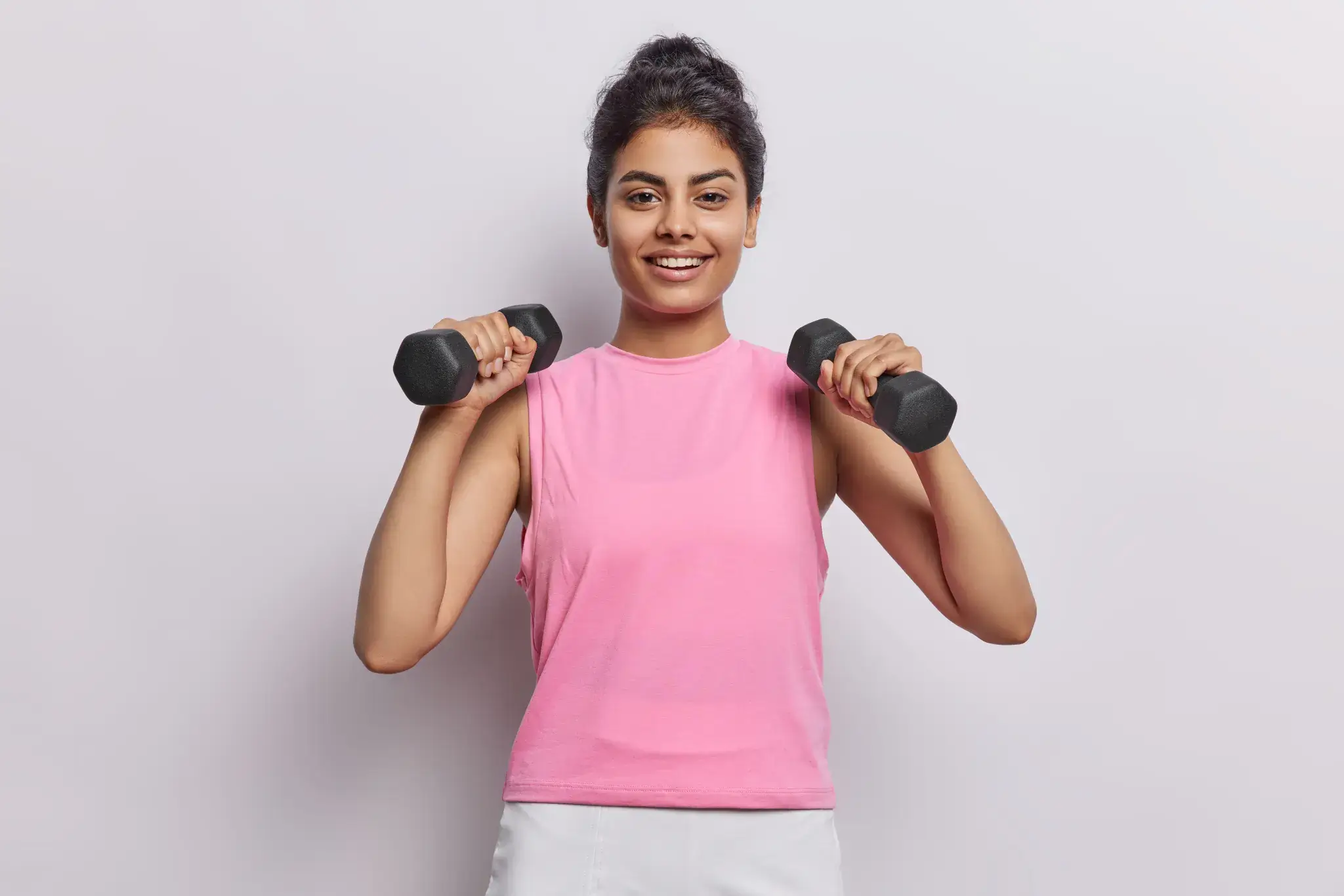
Beginner Exercises for Women: Easy Workouts to Get You Moving
Starting an exercise routine can feel overwhelming, especially for women who are new to working out. However, regular physical activity is essential for overall well-being, helping to improve cardiovascular health, build strength, and boost mental clarity. These beginner exercises for women are designed to be accessible, easy to perform, and highly effective in establishing a consistent fitness habit. Whether you’re looking to enhance flexibility, increase endurance, or simply feel more confident in your body, these workouts will provide a strong foundation to get you moving and support a healthier, more active lifestyle.
Guidelines for Beginner Exercises for Women
Building a strong foundation is key to a successful fitness journey. These guidelines will help women stay safe, motivated, and consistent as they begin exercising.
- Start Slowly: Gradually increase the intensity of workouts to prevent overexertion. It’s essential to listen to your body and rest when needed. Pushing too hard too soon can lead to burnout or injury, so ease into your fitness routine.
- Focus on Form: Performing exercises with the correct form is crucial to prevent injury and maximize effectiveness. Whether it’s squats, lunges, or push-ups, learning the right technique from the beginning will help build strength safely.
- Consistency is Key: Aim to exercise at least 2-3 times per week to see noticeable improvements in strength, stamina, and overall health.
- Warm-Up and Cool-Down: A proper warm-up before exercising and a cool-down afterward can help reduce soreness and improve flexibility.
- Choose Beginner-Friendly Exercises: Start with low-impact movements like walking, bodyweight exercises, or yoga to ease into physical activity.
- Prioritize Strength Training: Strength exercises don’t have to be intimidating. Bodyweight workouts, resistance bands, or light dumbbells can help tone muscles and improve metabolism.
- Stay Hydrated and Eat Well: Proper hydration and nutrition play a vital role in supporting workouts.
- Listen to Your Body: Pay attention to any discomfort or pain. Soreness is normal, but sharp pain or excessive fatigue could be signs of overtraining or incorrect form.
- Set Realistic Goals: Instead of focusing on drastic results, set small, achievable milestones.
- Find Enjoyable Activities: The best beginner exercises for women are the ones that feel enjoyable.
By following these guidelines, women can build confidence in their fitness journey and develop a sustainable, healthy workout routine.
Effective Beginner Exercises for Women
A. Bodyweight Exercises
SQUATS
Muscles Targeted: Quads, hamstrings, glutes, calves.
How to Do It: Stand with feet shoulder-width apart, lower your hips as if sitting in a chair, keeping your knees behind your toes. Rise back up to the starting position.
Benefits: Builds lower body strength, improves balance, and tones the legs and glutes.
PLANK
Muscles Targeted: Core, shoulders, back.
How to Do It: Hold a push-up position with your arms straight, making sure your body forms a straight line from head to heels. Engage the core and hold for 20-30 seconds.
Benefits: Builds core strength, improves posture, and engages multiple muscle groups.
B. Cardio Exercises
Walking
Benefits: Low-impact exercise that improves heart health, burns fat, and increases stamina.
Marching in Place
Benefits: Increases heart rate, engages the legs, and helps with coordination.
Jumping Jacks
Benefits: A full-body exercise that increases heart rate, improves coordination, and burns calories.
C. Flexibility and Mobility Exercises
Cat-Cow Stretch
Benefits: Improves spinal flexibility and reduces tension in the back and neck.
Child’s Pose
Benefits: Stretches the back, relieves tension, and promotes relaxation.
Standing Forward Fold
Benefits: Increases flexibility in the hamstrings and lower back.
D. Core & Stability Exercises
Seated Knee Lifts
Benefits: Strengthens the core, improves hip mobility, and is beginner-friendly.
Dead Bug
Benefits: Enhances core stability, coordination, and spinal support.
Heel Touches
Benefits: Improves side core strength and enhances waist definition.
Single-Leg Stand
Benefits: Improves balance, stability, and strengthens the lower body.
Benefits of Exercising During Menopause
Menopause brings several hormonal changes that can impact physical health, mood, and overall well-being. Regular exercise during this stage offers multiple benefits, helping women manage symptoms and maintain a strong, healthy body. Even simple movement can make a difference, and beginner exercises for women provide an accessible way to start reaping the benefits.
Helps Manage Weight Gain
As metabolism slows down during menopause, many women experience weight gain, particularly around the abdomen. Exercise helps combat this by increasing muscle mass and improving calorie burn. Strength training and cardio exercises are particularly effective in maintaining a healthy weight. If you’re new to working out, activities like brisk walking, bodyweight exercises, or resistance band workouts can be a great entry point.
Supports Bone Health and Prevents Osteoporosis
The decline in estrogen levels during menopause can lead to reduced bone density, increasing the risk of osteoporosis. Weight-bearing exercises like walking, squats, and resistance training help strengthen bones and reduce fracture risk. Starting with low-impact movements, such as seated leg lifts or wall push-ups, can be a safe and effective way to build bone strength.
Reduces Hot Flashes and Night Sweats
Many women find that consistent physical activity helps regulate body temperature and reduces the intensity of hot flashes and night sweats. While high-intensity workouts may not suit everyone, lighter options such as yoga, stretching, or swimming can be beneficial. These gentle movements, which are great examples of beginner exercises for women, support circulation and help manage body heat fluctuations.
Boosts Mood and Mental Health
Mood swings, anxiety, and irritability are common during menopause due to hormonal changes. Exercise releases endorphins—natural mood boosters—that help reduce stress and promote emotional well-being. Even something as simple as a daily walk or a short Pilates session can be effective in improving mood and mental clarity.
Improves Heart Health
Women face an increased risk of cardiovascular disease post-menopause due to hormonal changes affecting cholesterol levels and blood pressure. Regular aerobic exercise, such as walking, cycling, or swimming, strengthens the heart and improves circulation. Those new to exercise can start with short, low-impact sessions and gradually increase intensity for long-term heart health.
Maintains Muscle Strength and Joint Health
Loss of muscle mass and joint discomfort can make daily movements feel more difficult. Strength training helps preserve muscle tone, supports joint health, and prevents stiffness. For those looking for an easy starting point, beginner exercises for women like light dumbbell work, bodyweight squats, and simple arm raises can be highly effective in maintaining mobility and strength.
Enhances Energy Levels and Reduces Fatigue
Persistent fatigue is common during menopause, often linked to hormonal fluctuations and poor sleep. Regular exercise helps boost energy levels by improving circulation and oxygen flow to the muscles. Even light activities, such as stretching or tai chi, can provide an instant refresh without feeling exhausting.
Supports Cognitive Function and Brain Health
Brain fog and forgetfulness are frequent concerns during menopause. Studies show that staying physically active can enhance cognitive function, improving memory and focus. Engaging in movement-based activities, such as dancing or balance exercises, stimulates brain activity and helps keep the mind sharp. Beginner exercises for women, such as simple coordination drills, can be an excellent way to support brain health while staying active.
By incorporating a mix of beginner-friendly workouts, strength training, and flexibility exercises, women can navigate menopause with greater ease, maintaining their physical and mental well-being. Exercise is a powerful tool for staying strong, energized, and confident during this phase of life.
Conclusion
Incorporating beginner exercises for women into a fitness routine during menopause can have a transformative impact on both physical and mental well-being. Regular movement helps build strength, improve flexibility, and boost energy levels while also reducing stress and enhancing mood. Whether through bodyweight exercises, low-impact cardio, or gentle stretching, these workouts provide a strong foundation for a healthier lifestyle. By prioritizing movement and overcoming common barriers, women can navigate menopause with greater confidence, resilience, and overall health.
FAQs
Aim for at least 150 minutes of moderate exercise per week, which can be broken down into 30-minute sessions five times a week. A mix of strength training, cardio, and flexibility exercises helps maintain overall health.
Setting small, achievable goals, tracking progress, and finding enjoyable activities, such as walking with friends or following guided workouts can help maintain motivation.
Yes, a combination of resistance training, high-intensity interval training (HIIT), and core-strengthening exercises can help manage weight and reduce fat storage around the midsection. Staying active also improves metabolism.
Weight-bearing exercises like walking, lunges, and resistance training help maintain bone density and reduce the risk of osteoporosis. Strength exercises that focus on the lower body and core also improve stability and balance.
If high-impact movements feel challenging, opt for low-impact options like water aerobics, cycling, or chair yoga. Gentle stretching, mobility exercises, and light strength training can help reduce stiffness and improve flexibility.

Sonakshi Kandhari




